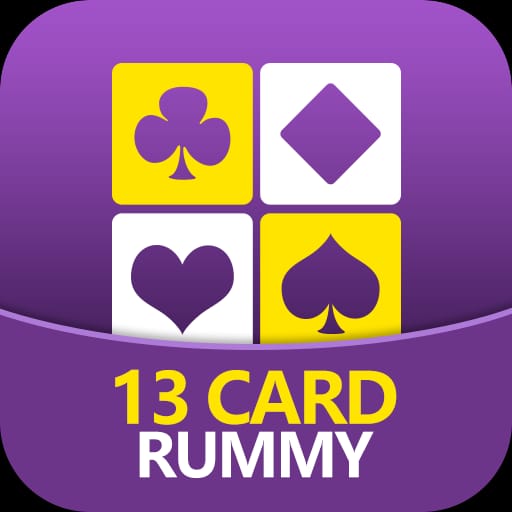Mastering the Art of 13 Cards Rummy: Understanding the Rules
13 Cards Rummy, also known as Indian Rummy, is a popular card game played across the Indian subcontinent and beyond. It’s a game that requires skill, strategy, and a good understanding of the rules. Whether you’re a beginner or a seasoned player looking to sharpen your skills, understanding the basic rules of 13 Cards Rummy is essential. Let’s delve into the fundamentals: Also Download Teen Patti Fun

Objective of the Game:
The primary objective of 13 Cards Rummy is to form valid sets and sequences using the cards in your hand. A valid set is a group of three or four cards of the same rank but different suits, while a valid sequence is a group of three or more consecutive cards of the same suit.
Deck and Number of Players:
13 Cards Rummy is typically played with two decks of standard playing cards and two jokers. Each deck consists of 52 cards, resulting in a total of 104 cards in play. The game is usually played by 2 to 6 players.
Dealing the Cards:
Once the players are seated, a random toss determines who gets to deal the cards. The dealer then shuffles the deck and deals 13 cards to each player, one card at a time, in a clockwise direction. The remaining cards form the closed deck, with one card placed face-up to start the discard pile.
Gameplay:
The game begins with the player to the left of the dealer picking a card from the closed deck or the open discard pile. After picking a card, the player must then discard one card from their hand onto the discard pile. The turn then passes to the next player in a clockwise direction.
Forming Sets and Sequences:
As the game progresses, players aim to form valid sets and sequences using the cards in their hand. A valid set can be formed by grouping together three or four cards of the same rank but different suits. A valid sequence can be formed by arranging three or more consecutive cards of the same suit.
Declaring a Show:
Once a player has formed at least two sequences, one of which must be a pure sequence (without a joker), and the remaining cards are grouped into sets or sequences, they can declare a show. The player must then place their cards face down on the table to reveal their hand.
Scoring:
The winner of the round is awarded points based on the cards left in the other players’ hands. Face cards (Jack, Queen, King, and Ace) carry 10 points each, while numbered cards carry points equivalent to their face value. Jokers carry zero points. The game typically continues for a predetermined number of rounds, and the player with the lowest cumulative score at the end is declared the winner.
Conclusion:
13 Cards Rummy is a game that combines skill, strategy, and a bit of luck. By mastering the basic rules outlined above, you’ll be well on your way to becoming a formidable player in this timeless card game. So gather your friends, shuffle the deck, and let the games begin! Also Download Rummy Wealth























I don’t think the title of your article matches the content lol. Just kidding, mainly because I had some doubts after reading the article.